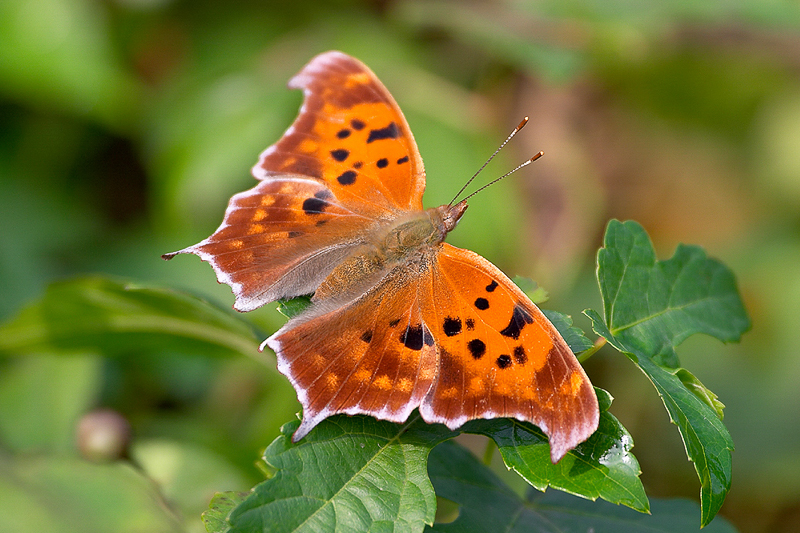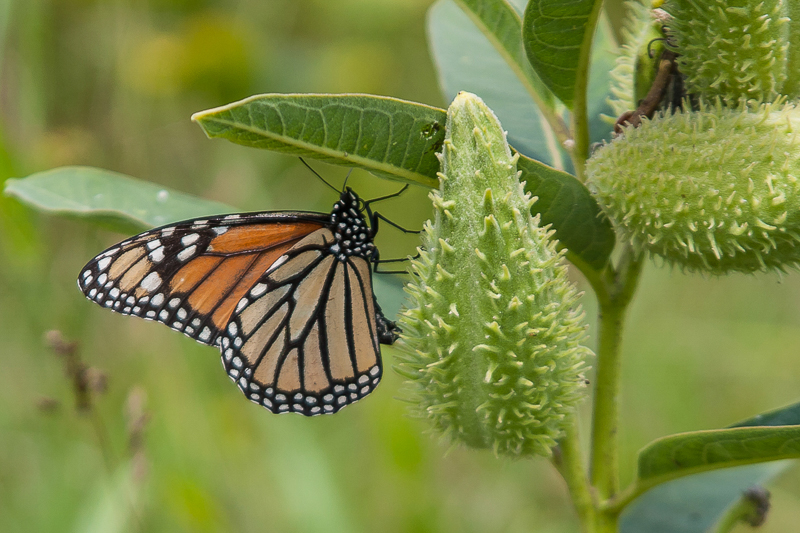Butterflies and Moths: Differences Are Just Scale Deep
For immediate release ‐ June 16, 2021
Contact: Micah Beasley, 919.707.9970. Images available upon request
By Colin Brammer, PhD, Coordinator of the Natural World Investigate Lab

Often one wonders what the difference is between butterflies and moths. They are all just bugs, aren’t they? While native English speakers have two distinct words for the seemingly separate insects, The French, linguistically, consider them the same. Papillon is French for butterfly. Moth, in French is papillon de nuit, or “butterfly of night.”
Butterflies and moths are both within the order Lepidoptera (the scale-winged insects). Lepido is Greek for scale and ptera is Greek for wing. Lepidoptera are holometabolous; they have a complete lifecycle of egg, larva, pupa and adult.
There are some general distinguishing features for separating butterflies and moths, but as with most things, there are exceptions to every rule.
(1.) Butterflies are diurnal (fly during the day) and moths are nocturnal (active at night). Some exceptions are certain clear-winged sphinx moths (aka hawk moths) – like the Snowberry Clearwing Moth, Hemaris diffinis – that are diurnal. Other diurnal moths are Ctenucha moths (pronounced Ten-oo-ka) and the beautiful, but unfortunately non-native, Alianthus Webworm Moth, Atteva aurea. This general guideline goes hand in hand with # 2 on the list.
Click any photo to see a larger version.
(2.) Butterflies are brightly colored and moths are usually darker or have muted colors of brown or gray. Of the day flying moths mentioned in #1, none are muted or brown and gray. Even with night flying moths, look at the eyespots and complex patterns of North America’s largest moth, the Cecropia (Hyalophora cecropia). Tell me that is not captivating, even if you only see it near your porch light. Or consider the Luna moth (Actias luna), that looks like an otherworldly spirit. Nothing dull about that stunning green color.
(3.) Butterflies have more slender bodies where moths are usually stouter-bodied and appear heavier.
(4.) Butterflies have slender, clubbed antennae. Moths have either hair like antennae, or in some species males will have feather-like antennae. The only oddity in this grouping are the skippers (Family Hesperiidae). Proven to be butterflies by scientific research, their antennae aren’t clubbed at the end, but hooked.
(5.) Butterflies molt to a chrysalis when pupating while moths spin a silken cocoon. Technically, both butterflies and moths have chrysalides; it is most moths that also spin the silken cocoon around the chrysalis of protection. Some exceptions include the hawk moths, that burrow into the ground and molt to a hard chrysalis-like covering, and Parnassius butterflies that spin a cocoon-like web.
(6.) Butterflies hold their wings vertically over their backs when at rest; moths spread their wings flat when at rest. Many butterflies such as the Eastern Tiger Swallowtail (Papilio glaucus) rest with their wings flat to the sides. Some moths, such as the Rosy Maple Moth (Dryocampa rubicunda) and most tiger moths (Family Arctiidae) hold their wings tent-like over their backs. And again, we have the unique skippers that hold their wings in “jet-plane position” – neither over their backs nor spread to the side.
Even though there are minor differences and these guidelines may make it easier to distinguish a moth from a butterfly, just remember, they are all in the same order: Lepidoptera. So if in doubt, say “it’s a Lep!”
If you are really not sure, you can always send a photo and details on where you observed the specimen to Ask a Naturalist, and we would be more than happy to help you identify your mystery sighting!
Previous Ask a Naturalist: Eastern Fence Lizard | Older Ask a Naturalist posts
For more information about our upcoming activities, conservation news and ground-breaking research, follow @NaturalSciences on Instagram, Twitter and Facebook. Join the conversation with #visitNCMNS.


















